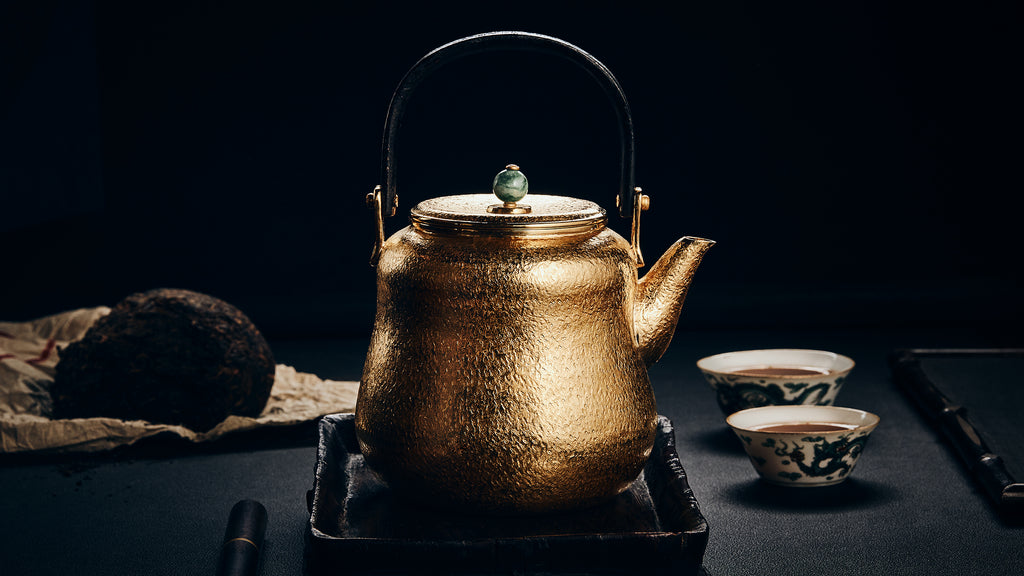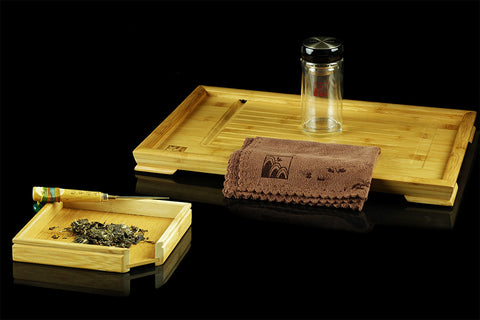FAQ
- What is Pu'er tea?
Pu'er tea is a tea variety made in the Lancang River region in southern and western Yunnan Province. It uses large fresh leaves of the tea tree (camellia sinensis assamica), which are dried in the sun and usually pressed into cakes and bricks, which can be stored for a long time.

Pu'er tea is divided into two categories: raw Pu'er and cooked Pu'er .
Both teas are made from the same Camellia sinensis plant. Raw Pu'er tea is made from large sun-dried tea leaves and pressed into biscuits, Tuocha and tea bricks. Pu'er tea ages very slowly and ages naturally over time. Ripe Pu'er tea is made from sun-dried large-leaf tea, which is fermented and pressed into tea products of different shapes. The tea leaves of raw Pu'er are dark green and the tea water is bright orange. Ripe Pu'er tea leaves are dark brown and the tea water is bright brown, similar to the color of red wine.
- How to brew Pu'er tea?
To learn the traditional way of brewing Pu'er tea, read our instructional guide or watch the instructional video:
To learn how to make tea using our double wall glass, check out this instructional video:
- Why is Pu'er tea sometimes packaged in biscuits or tea bricks?
This method of storing tea is hundreds of years old and was originally developed to transport tea more efficiently and preserve its aroma. We still press tea into these shapes, both to respect tradition and to preserve the aroma of the tea. In addition, Pu'er tea is great for collection and investment, and pressing the tea into biscuits and tea bricks ensures that the tea's value increases over time.
- I buy compressed tea cakes or tea bricks. What now?
Once you purchase a tea cake or tea brick, you can choose whether to enjoy it now or save it for later. If you choose to save it for later, see below. If you want to drink tea now, use a Pu'er tea pick or knife to open the tea cake or tea brick.
To learn how to use Pu'er tea picks, read our instructions or watch this instructional video:
- What tea set should I use?
In most cases, it depends on your situation and desired results. If your goal is just to make a good pot of tea, a clay teapot from Yixing will usually make the best quality tea. In more formal settings, such as tea ceremonies, the Gaiwan allows the brewer and spectators to experience the tea-making process in a traditional way. If it's a more casual occasion, consider using our glasses to give you a more convenient brewing experience.
If you don't know what you need to get started, take a look at our starter bundle, pictured below.

- How should I store Pu'er tea?
- What is Maocha?
- What should you pay attention to when buying Pu'er tea?
1. Smell : The tea should not have any strange or unexpected aroma.
2. Color : Observe the color. If it is yellow-green, it means it is raw tea; if it is red or brown, it means it is cooked tea.
3. Storage : should be stored in a dry and clean environment.
4. Flavor : It should have a mild aroma without any extra flavor mixed in.
- What should you avoid when buying Pu'er tea?
Do not rely on packaging to judge the quality of tea, as the packaging may be fake.
Do not judge the age of tea leaves based on their dark color.
Do not mistake any added flavor for the original flavor of the tea.
Do not use the age of the tea tree as the only criterion for measuring quality.
- What is the difference between dry storage and wet storage?
However, convenience comes at a price, and Pu'er tea often develops a musty smell and even grows mold when stored in wet warehouses. Dry storage helps the tea maintain its natural aroma and is generally a safer and healthier way to store Pu'er tea.
Keep in mind that some companies will pass off wet-stored Pu'er tea as dry-stored Pu'er tea, so be sure to double-check the Pu'er tea you are purchasing.
- What is the difference between sun-dried tea and high-temperature dried tea?
As the name suggests, sun-drying máo chá refers to placing tea leaves in the sun to dry naturally. The finished product can be stored for a long period of time. In fact, Pu'er tea is made by drying tea leaves in the sun rather than using a machine.
- What are crab legs?
- How is Pu'er tea graded?
The grade of tea is determined by the number of buds or stems. The higher the grade of tea, the more bud heads, and the lower grade of tea , the more tea stems. However, these grades do not always correlate with quality. Although the tea leaves ranked higher are tenderer and contain more buds, this does not mean that it is objectively better.
